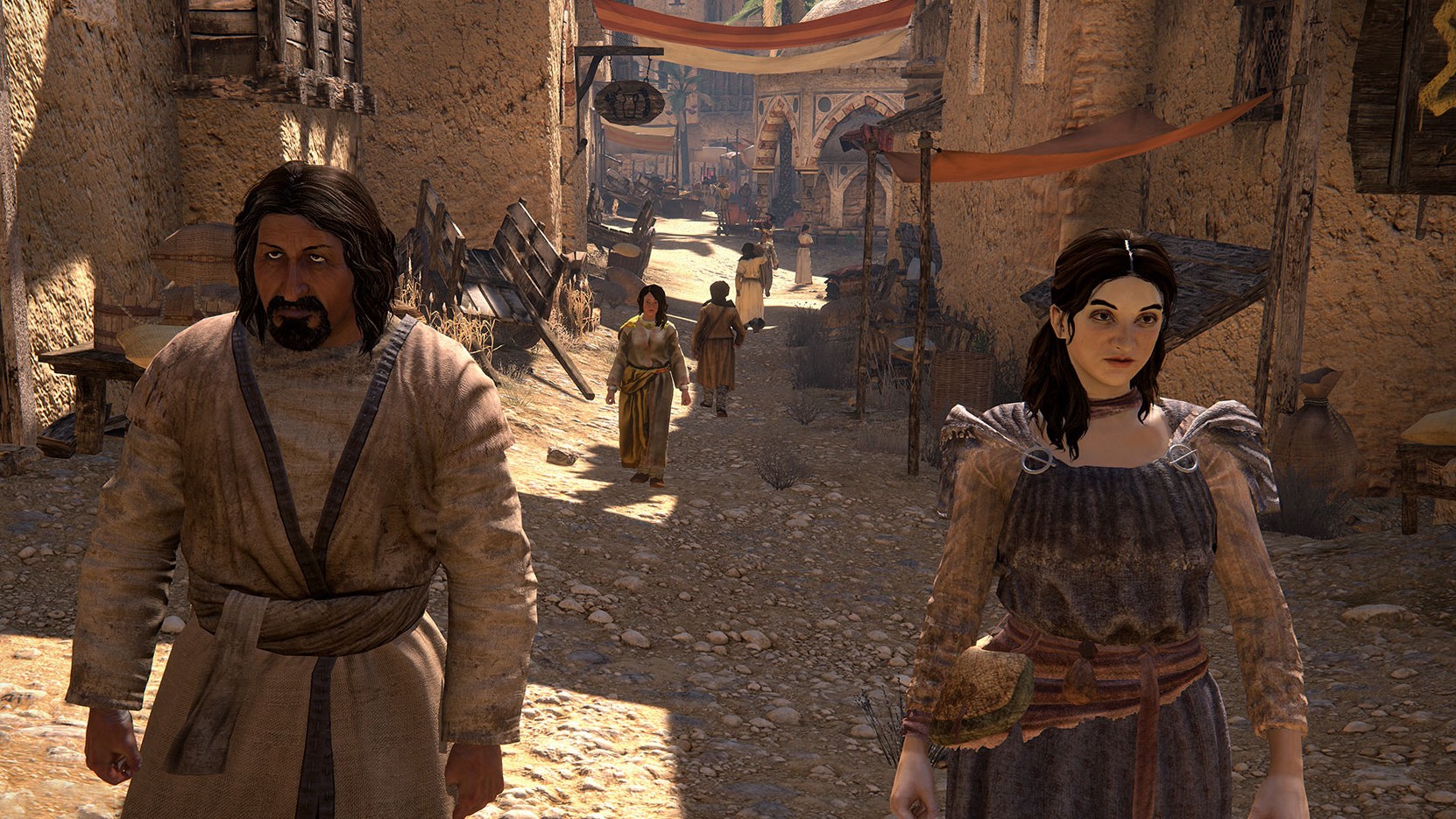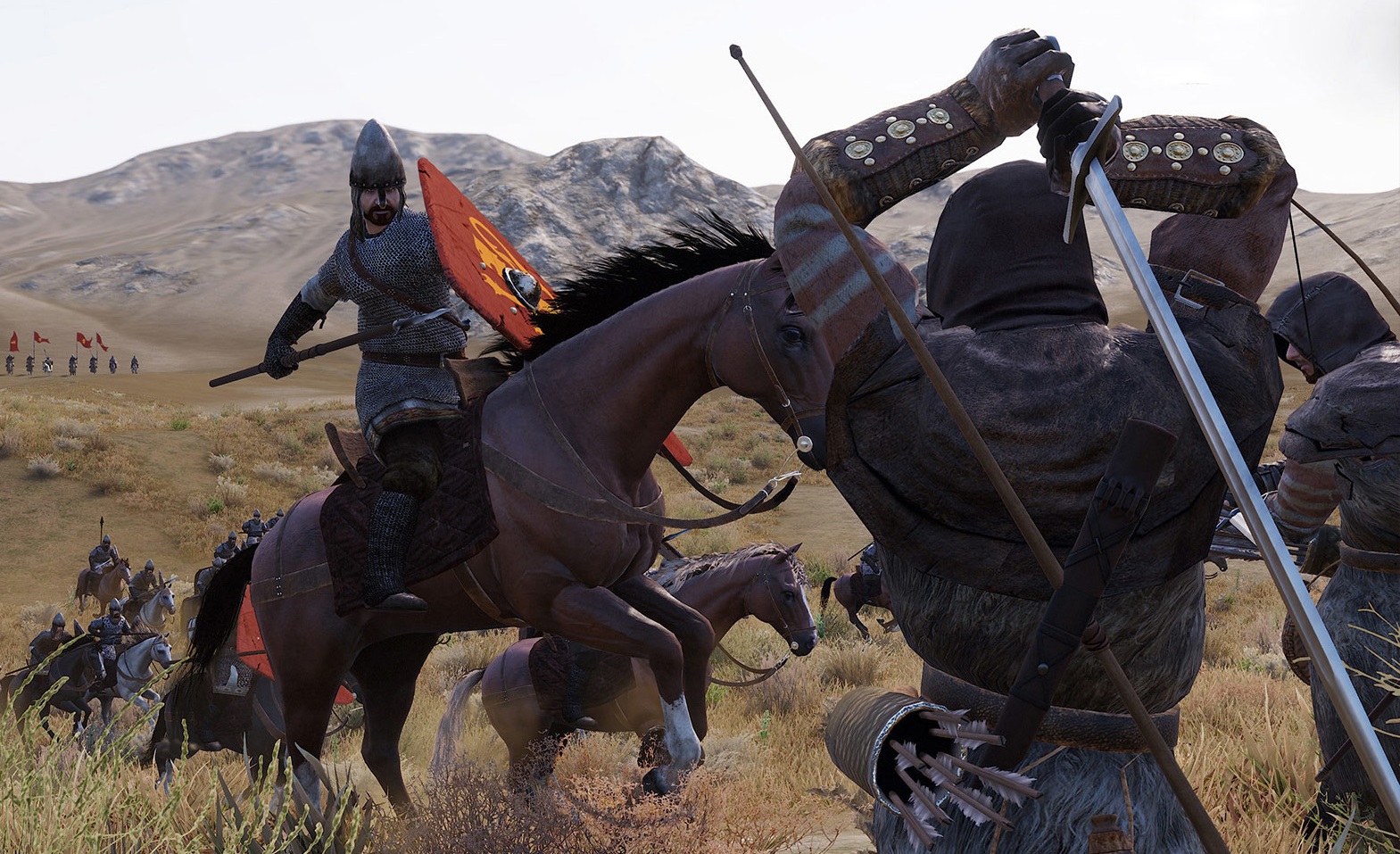How to open a Bannerlord workshop and make easy money
Find out how to buy your first business, where to put it, and what products to make.


Bannerlord cheats: Get rich and dominate battles
Bannerlord companions: How to recruit the best
Bannerlord tips: Our full beginner's guide
Bannerlord difficulty: Which to choose
Bannerlord mods: The best player-made additions
Bannerlord marriage: How to start a family
Bannerlord combat: Battle and 1v1 tips
Bannerlord money: Get rich quick
Bannerlord factions: Which should you choose?
Bannerlord caravan: How best to trade
One way to make consistent cash is to set up a profitable Mount & Blade 2: Bannerlord workshop. That's not the only business you can set up, however, but your decision to choose a workshop or a caravan depends whether you're in the mood for steadier profits or riskier spikes.
Caravans represent the latter: they can score big some months, but they're also vulnerable to attack. Workshops are less hassle, but it takes longer before you start reaping the rewards. That said, they produce various goods such as wood, pottery, and booze, and for around 13-16 thousand gold denars, they can be yours. If you're patient enough for a smoother money-making ride, here's how to buy a workshop, the different types you can establish and the best Bannerlord workshop locations for you to maximise your revenues.
How to buy a Bannerlord workshop
First enter a town that isn't hostile to you—more on choosing an ideal town and industry below. Once you’re in your desired town, go to the workshop itself by holding down Alt to show location markers. Look out for markers like Smithy, Pottery Shop, or Brewery. Once you get to one of these locations, check just outside and inside for an NPC called a 'Shop Worker'. It may be a hunt to find them: Some workshops have five or six employees, but some have just one.
They tell you about workshops generally and the specific one you're in. Select “I would like to buy this workshop” to see the purchase price and purchase it. Most workshops cost between 13 and 16 thousand denars, though you can sell them later for a similar amount. Now you can change the workshop to a different type of industry or keep it the same.
Congratulations! You now own a workshop. You can return here to manage it or do all your management via the 'Other' tab on your clan screen. Note: Before you start planning your business empire, remember that you can only own total workshops equal to your clan level plus one.
The best Bannerlord workshop locations for each type of product
Choose where to build your workshop based on what you want to produce and the strongest economic hub for it. Here are a few things to look for before you decide to invest:
- Keep the basics of trade in mind: Ensure your desired product is selling for a decent amount in the region you want to make it.
- Find a town with high prosperity: These urban settlements are larger, more populous, and consume more goods. As prosperity rises, the price of everything tends to rise—most importantly, like the price of your product. Find a town's prosperity by mousing over it and holding Alt to expand the tooltip.
- These are the most prosperous towns: Marunath, Epicrotea, Lageta, Ortysia, and Vostrum all start with 5000 or more prosperity. With 5600 prosperity, Ortysia is the highest prosperity city in the game. The B-tier cities, with 4500 or more prosperity, are Sargot, Diathma, Saneopa, Rothae, Zeonica, Poros, Danustica, Razih, and Chaikand. (The Sturgians have no major cities. Their largest towns are Varcheg, Omor, and Sibir, with 3000-3300 Prosperity.)
- Prosperity can rise and fall faster than you think: Find cities safe from major wars. Use your Alt-tooltip view to be sure that the city has a large garrison, 500 or more soldiers, and that it isn’t sitting on the border with one of its owners’ enemies. Press N to use the 'Kingdoms' view in the encyclopedia for this.
- Ensure the town has a strong economy: You can’t see exactly how well a town is doing unless you’re its owner, but when you enter a town it has a descriptive screen. Look for telltale signs like ragged clothes and beggars: settlements with this might indicate that this isn't the best place to invest… unless your product is going to be cheap.
Here are the best workshop types, what they produce, the raw materials they require. Also, here are the best locations for each business (I’ve made 200-500 denars a day with these locations):
Keep up to date with the most important stories and the best deals, as picked by the PC Gamer team.
| Type | Product(s) | Raw material(s) required | Best location(s) |
|---|---|---|---|
| Smithy | Weapons, armor, tools | Iron ore, hardwood, linen | Epicrotea, Lageta, Seonon |
| Tannery | Light armor, leather | Hides, linen | Tylal, Pravend, Baltakhand |
| Velvet Weavery | Velvet | Cotton | Shariz |
| Wine Press | Wine | Grapes | Ortysia |
| Wood Workshop | Bows, arrows, shields | Hardwood | Marunath, Dunglanys |
| Wool Weavery | Clothing | Wool | Baltakhand |
| Brewery | Beer | Grain | Askar, Chaikand, Ocs Hall |
| Linen Weavery | Linen | Flax | Rhotae |
| Olive Press | Oil | Olives | Ethos |
| Pottery Shop | Pottery | Clay | Pen Cannoc, Ocs Hall |
| Silversmith | Jewelry | Silver Ore | Ortysia |
But, how do workshops actually work?
In each new game of Mount & Blade 2 the workshops in each town are randomly generated, but the products made in each village are not. Between two and eight villages correspond to each town, and people from those villages travel to the town regularly to sell their products—mouse over nearby villages to see the tooltip showing what they produce. The products of a town’s associated villages will generally be cheaper in that town, but there are exceptions: Extremely prosperous towns eat up nearly all food that comes in, keeping food prices high regardless.
Some villages' associations aren’t so clear because they’re ruled by a nearby castle, but those villages do send their goods to the nearest friendly town they can. When in doubt, wait near the village for its people to leave, then follow them to their destination.
This can all be complicated by groups of looters and bandits that stop and rob the villager groups, preventing the goods making it to market. Rampaging enemy armies will also loot and burn villages, stopping the flow of goods and potentially setting the entire town back economically.
Each day, workshops take input goods from their town’s market and create their output goods. (You can’t directly stock your Workshops, or level them up, in the current Early Access release.) This means that starting certain workshops in certain Towns is a good way to ensure you make money—a Town like Askar, with its three grain-producing Villages, is a natural site for a Brewery, while Pen Cannoc has lots of clay, so it does well with a Pottery Shop.

Establishing a monopoly and other stupid workshop tricks
Here are some silly ways to make a lot of money using workshops. They're not quite in the spirit of playing the game normally, but they abuse its economic simulation functions to great effect. The downside is that they require action on your part to really sing, as opposed to just establishing your average shop and passively taking in profit.
Establish a monopoly
Find a town with a lot of raw input for one product, like Askar (grain) or Pen Cannoc (clay). Buy the workshop(s) in that town and have them churn out your desired product. Finally, go around the map or use the encyclopedia, to find every other place producing your end product. Buy those workshops, change their type to something else, then sell them again.
It might take a week to kick in, but congrats, you now have a monopoly as NPCs won’t ever change the types of the workshops you bought and sold. Now buy up your chosen product as it becomes available and sell it in other places for immense profit.
Build your own trade route
Find a raw material that’s only available in one part of the map, like olives or grapes. First, establish a monopoly as you did above—go around this region and destroy all the Wine or Olive Presses by buying, changing, then selling them. Go to the far end of the map and pick a few towns, then buy a workshop in each and change them accordingly.
The produce should start to pile up—sometimes into the thousands—where you started, so pick it up and complete a few laps of your new workshop towns, selling off a bit at a time and then buying your produce as it appears. Once you’ve sold all your input goods, go back and sell the now-rare product, and start over. And there you go, you’ve just invented your own personal trade route.
Jon Bolding is a games writer and critic with an extensive background in strategy games. When he's not on his PC, he can be found playing every tabletop game under the sun.

